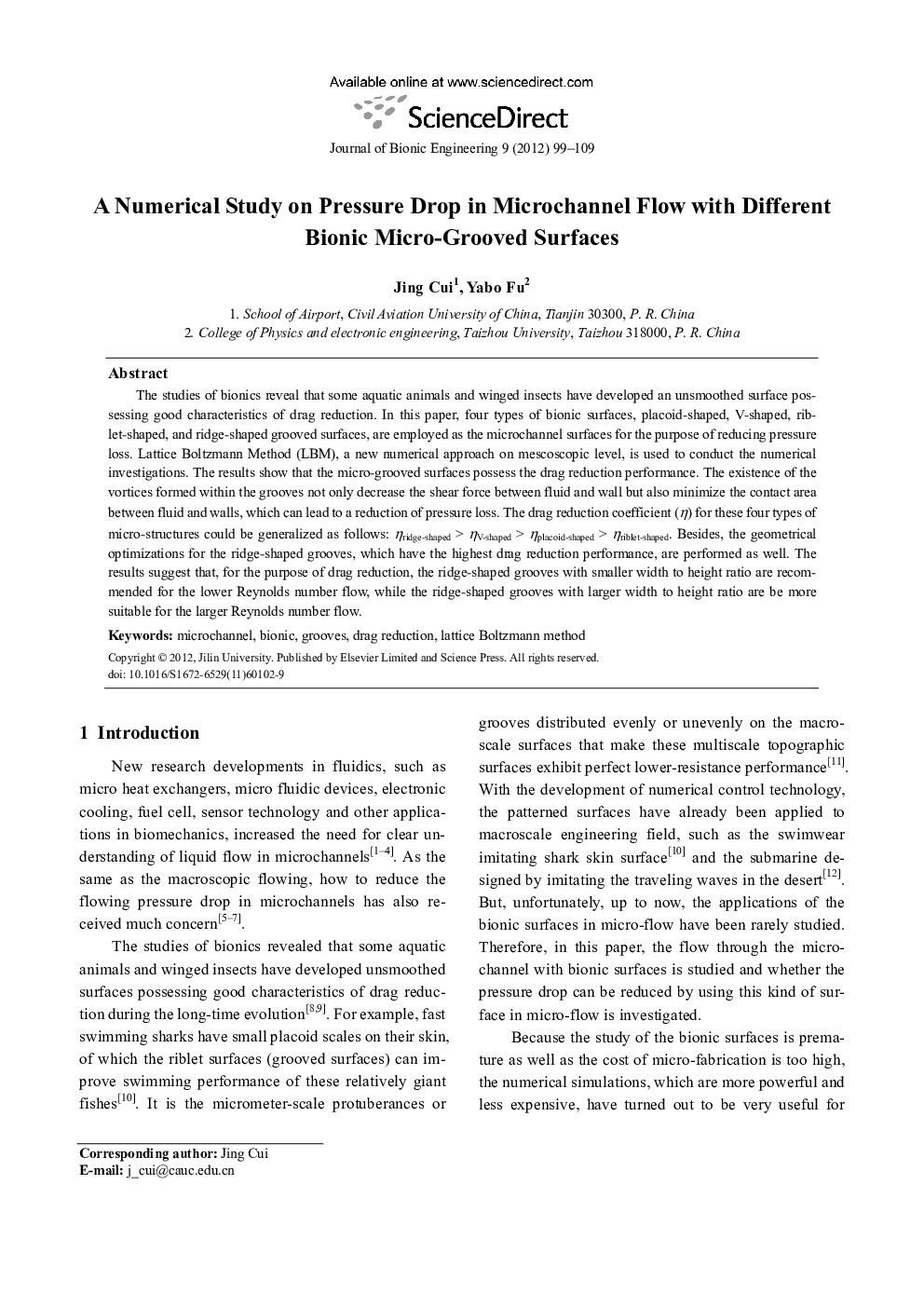| Article ID | Journal | Published Year | Pages | File Type |
|---|---|---|---|---|
| 826756 | Journal of Bionic Engineering | 2012 | 11 Pages |
Abstract
The studies of bionics reveal that some aquatic animals and winged insects have developed an unsmoothed surface possessing good characteristics of drag reduction. In this paper, four types of bionic surfaces, placoid-shaped, V-shaped, riblet-shaped, and ridge-shaped grooved surfaces, are employed as the microchannel surfaces for the purpose of reducing pressure loss. Lattice Boltzmann Method (LBM), a new numerical approach on mescoscopic level, is used to conduct the numerical investigations. The results show that the micro-grooved surfaces possess the drag reduction performance. The existence of the vortices formed within the grooves not only decrease the shear force between fluid and wall but also minimize the contact area between fluid and walls, which can lead to a reduction of pressure loss. The drag reduction coefficient (η) for these four types of micro-structures could be generalized as follows: ηridge-shaped > ηV-shaped > ηplacoid-shaped > ηriblet-shaped. Besides, the geometrical optimizations for the ridge-shaped grooves, which have the highest drag reduction performance, are performed as well. The results suggest that, for the purpose of drag reduction, the ridge-shaped grooves with smaller width to height ratio are recommended for the lower Reynolds number flow, while the ridge-shaped grooves with larger width to height ratio are be more suitable for the larger Reynolds number flow.
Related Topics
Physical Sciences and Engineering
Engineering
Biomedical Engineering
Authors
Jing Cui, Yabo Fu,
